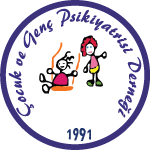ABSTRACT
Conclusion:
Our study shows the presence of elevated rates of mental disorders, lack of attendance to formal education and impaired family functioning among youth under court-mandated treatment. Studies conducted to determine the protective factors affecting the mental health of these children are limited. It is important that the policies to be developed in this area are preventive and protective and planned in a way that covers the overall of public.
Results:
One hundred thirty-five children (55.6% females) with a mean age of 12.3±4.2 years were included in the study. It was found that 17.0% of youth had left formal education while only 21.5 % did not fulfill criteria for a psychiatric diagnosis. Most common diagnoses were posttraumatic stress disorder (14.1%), attention deficit/ hyperactivity disorder (11.1%), conduct disorder (11.1%) and major depressive disorder (11.1%). Lack of attendance to formal education (p=0.000), irregular attendance to schools (p=0.031), being a victim of abuse (p=0.033) and presence of psychopathology (p=0.019) were significantly more common among older age group. Paternal and maternal histories of psychopathology were reported in 25.2% and 21.5%; respectively. Presence of mental illness in one of the parents was associated with elevated rates of domestic abuse (p=0.002) and court mandated foster placement (p=0.007).
Materials and Methods:
Records of cases followed in our clinic between March 2018 and January 2021 under court-mandated treatment were evalated retrospectively for socio-demographic and clinical characteristics of youth, parental characteristics and reasons for mandated treatment.
Objectives:
In this study, it was aimed to evaluate the socio-demogaphic features of cases followed up at the child psychiatry department due to mandation of courts (i.e. "health measures"), the reasons of court orders, psychiatric diagnoses and risk factors.
Keywords:
Mandatory treatment programs, forensic child and adolescent psychiatry, forensic psychiatry, legislation and jurisprudence
References
1Akyüz E. Ulusal ve Uluslararası Hukukta Çocuğun Haklarının ve Güvenliğinin Korunması, Ankara, Milli Eğitim Basımevi, 2000.
2Uğurlu Z, Gülsen İA. Çocuk hakları ve hukuki bağlamda çocuğun ihmal ve istismardan korunması. International Journal of Social and Educational Sciences. 2014;1:1-24.
3Hetherington R. Learning from difference: Comparing Child Welfare Systems. In: Towars Positive Systems of Child and Family Welfare İnternational Comparisons of Child Protection. Family Servise and Community Caring Systems. Toronto: University of Toronto Press. 2006;28:27-50.
4Yolcuoğlu İG. Türkiye’de çocuk koruma sisteminin genel olarak değerlendirilmesi, Aile ve Toplum. 2009;5:43-57.
5Aldemir V. Çocuk Koruma Kanununun Sosyal Hizmetler Ve Çocuk Esirgeme Kurumunda Uygulanmasına İlişkin Bir Değerlendirme, Sosyal Bilimler Enstitüsü, Sosyal Hizmet Anabilim Dalı, Ankara: Hacettepe Üniversitesi. 2011. (Yüksek lisans tezi).
6Finkelhor D, Turner HA, Shattuck A, Hamby SL. Prevalence of childhood exposure to violence, crime, and abuse: results from the National Survey of Children’s Exposure to Violence. JAMA Pediatr. 2015;169:746-754.
7Colgrove J, Bayer R. Manifold restraints: liberty, public health, and the legacy of Jacobson v Massachusetts. Am J Public Health. 2005;95:571-576.
8Takaoka K, Mizoguchi F, Wada I, Nakazato M, Shiraishi T, Ando S, Iyo M, Shimizu E. How parents suspected of child maltreatment change their cognition and behavior: a process model of outreach and child protection, generated via grounded theory. Childiren and Youth Services Review. 2016;71:257-265.
9Çocuk Koruma Kanunu, T. C. Resmi Gazete, sayı: 25876, 15 Temmuz 2005.
10Karakuş Ö. Tekin HH. Çocuk koruma kanunu uyarınca haklarında danışmanlık tedbiri uygulanan çocukların özellikleri (Konya örneği), Sosyal Politika Çalışmaları. 2012;7:29-44.
11Uluğtekin S. Çocuk Mahkemeleri ve Sosyal İnceleme Raporları. (2. baskı). Ankara; Türkiye Barolar Birliği Yayınları; 2004;89-92.
12Woods SB, Farineau HM, McWey LM. Physical health, mental health, and behaviour problems among early adolescents in foster care. Child Care Health Dev. 2013;39:220-227.
13Herrenkohl TI, Hong S, Klika JB, Herrenkohl RC, Russo MJ. Developmental impacts of child abuse and neglect related to adult mental health, substance use, and physical health. J Fam Violence. 2013;28:191-199.
14Hussey DL, Falletta L, Eng A. Risk factors for mental health diagnoses among children adopted from the public child welfare system. Childiren and Youth Services Review. 2012;34:2072-2080.
15Jee S, Szilagyi M, Blatt S, Meguid V, Auinger P, Szilagyi P. Timely identification of mental health problems in two foster care medical homes. Childiren and Youth Services Review. 2010;32:685-690.
16Skinner D, Tsheko N, Mtero MS, Segwabe M, Chibatamoto P, Mfecane S, Chitiyo G. Towards a definition of orphaned and vulnerable children, AIDS Behav. 2006;10:619-626.
17Er Fazlıoğlu A. Sağlık tedbiri kapsamında tedavisi yürütülen çocukların ve ailelerinin psikososyal özelliklerinin sosyal hizmet perspektifinden değerlendirilmesi. Journal of International Social Research. 2019;12:735-742.
18Nasıroğlu S. Mental assessment of child and adolescents in health measure. Cukurova Med J. 2017;42:484-489.
19Mian M. World report on vıolence and health: what ıt means for children and pediatricians. J Pediatr. 2004;145:14-19.
20Taner HA, Çetin FH, Işık Y, İşeri E. Psychopathology in abused children and adolescents and related risk factors. Anatolian Journal of Psychiatry. 2015;16:294-300.
21Alikaşifoğlu M. Ergenlerde davranışsal sorunlar. İstanbul Üniversitesi Cerrahpaşa Tıp Fakültesi Sürekli Tıp Eğitimi Etkinlikleri Adolesan Sağlığı II Sempozyum Dizisi. 2008;63:5-59.
22Frey A, Ruchkin V, Martin A, Schwab-Stone M. Adolescents in transition: school and family characteristics in the development of violent behaviors entering high school. Child Psychiatry Hum Dev. 2009;40:1-13.
23Cook PJ, Kang S. Birthdays, schooling, and crime: regression-discontinuity analysis of school performance, delinquency, dropout, and crime initiation. American Economic Journal: Applied Economics. 2016;8:33-57.
24Nemeroff CB. Paradise lost: the neurobiological and clinical consequences of child abuse and neglect. Neuron. 2016;89:892-909.
25Garland AF, Hough RL, McCabe KM, Yeh MAY, Wood PA, Aarons GA. Prevalence of psychiatric disorders in youths across five sectors of care. J Am Acad Child Adolesc Psychiatry. 2001;40:409-418.
26Lingenfelter N, Hartung S. School Refusal Behavior. NASN Sch Nurse. 2015;30:269-273.
27Gökçen C, Dursun OB. Bir Eğitim Hastanesi Çocuk Psikiyatri Birimine Gönderilen Adli Olguların İncelenmesi. Düşünen Adam Psikiyatri ve Nörolojik Bilimler Dergisi. 2012;25:238-243.
28Putnam FW. Ten-year research update review: child sexual abuse, J Am Acad Child Adolescant Psychiatry. 2003;42:269-278.
29Berger LM. Income, family characteristics, and physical violence toward children. Child Abuse Negl. 2005;29:107-133.
30Ayan S. Aile İçinde Çocuğa Yönelik Şiddet (Sivas İlköğretim İkinci Kademe Öğrencileri Üzerine Bir İnceleme), Cumhuriyet Üniversitesi Sosyal Bilimler Enstitüsü, Sosyoloji Anabilim Dalı, Sivas: Cumhuriyet Üniversitesi, 2007, (Doktora tezi).
31Horton CB, Cruise TK. Child Abuse and Neglect. The School’s Response. New York, The Guilford Press, 2001.
32O’Connell KL. What can we learn? Adult outcomes in children of seriously mentally ill mothers. J Child Adolesc Psychiatr Nurs. 2008;21:89-104.
33Mowbray CT, Bybee D, Oyserman D, Allen-Meares P, MacFarlane P, HartJohnson T. Diversity of outcomes among adolescent children of mothers with mental illness. J Emot Behav Disord. 2004;12:206-221.
34Mahoney L. Children living with a mentally ill parent: The role of public health nurses. Nurs Prax N Z. 2010;26:4-13.
35Korhonen T, Pietila AM, Vehvilainen-Julkunen K. Are the children of the clients’ visible or invisible for nurses in adult psychiatry? a questionnaire survey. Scand J Caring Sci. 2010;24:65-74.
36Akdemir D, Gökler B. Bipolar duygudurum bozukluğu olan anne babaların çocuklarında psikopatoloji. Turk Psikiyatri Dergisi. 2008;19:133-140.
37Örsel S, Karadağ H, Karaoğla Kahiloğlulları A, Akgün Aktaş E. The frequency of childhood trauma and relationship with psychopathology in psychiatric patients. Anatolian Journal of Psychiatry. 2011;12:130-136.
38Oral R, Can D, Kaplan S, Polat S, Ates N, Cetin G, Miral S, Hanci H, Ersahin Y, Tepeli N, Bulguc AG, Tiras B. Child abuse in Turkey: an experience in overcoming denial and a description of 50 cases. Child Abuse Negl. 2001;25:279-290.



